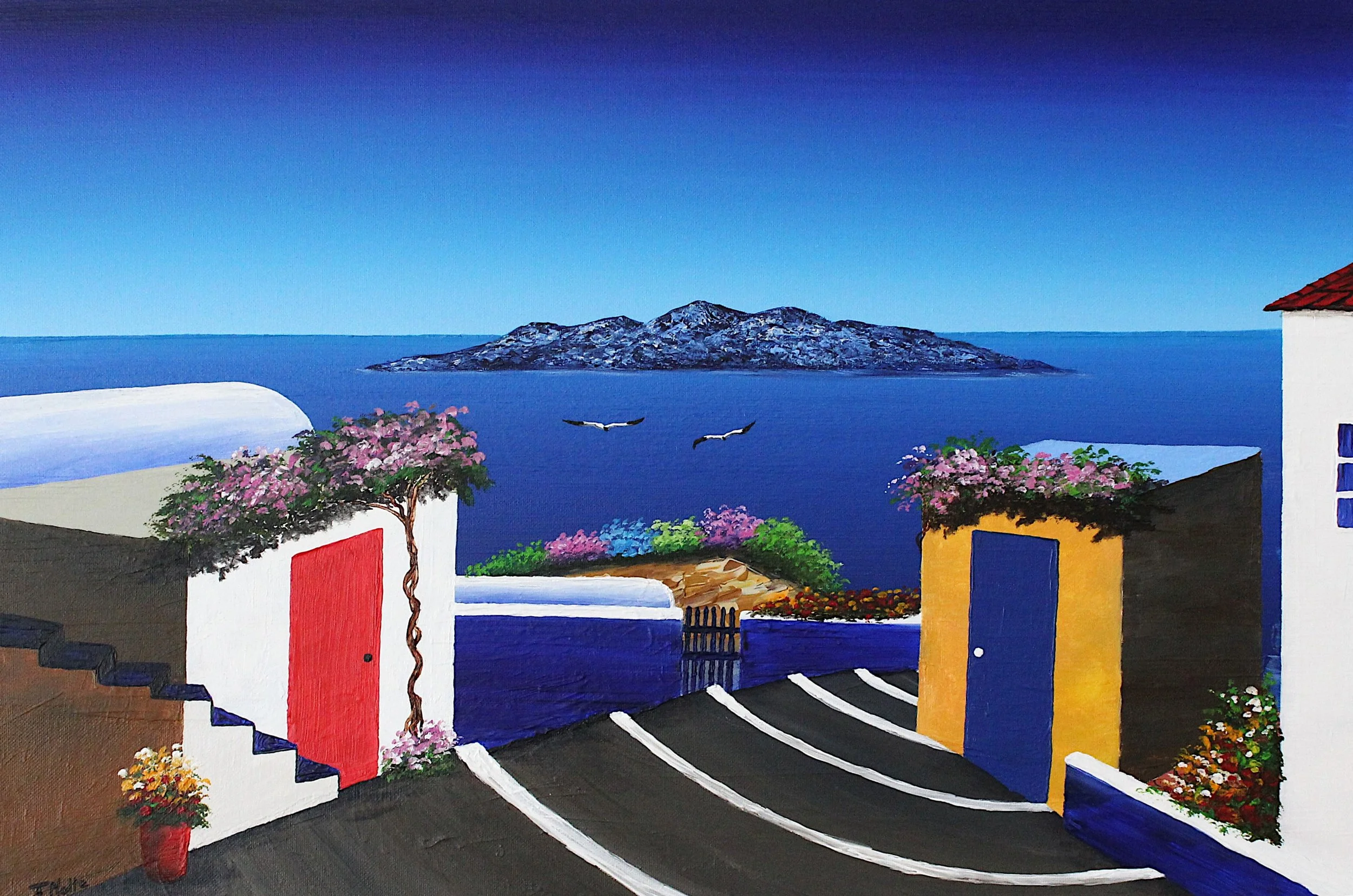The Day My Painting Defeated Me
There’s a small blue spot of paint on the white wall next to my easel. It’s barely the size of a two-euro coin, but for me, it’s a lasting symbol. It appeared in a moment when I collided with my own expectations. And I lost.
When Pressure Kills the Flow
The blue spot on my wall that turned into a quiet teacher.
It happened about two and a half years ago while I was working on a Mediterranean-inspired acrylic painting. Bright house facades, colorful flowers, the sea, and a small island on the horizon. I wanted the sky to be cloudless, deep blue at the top, gently fading toward the bottom to suggest the soft curvature of the horizon. A classic technique in landscape painting.
To make the gradient smooth, I used a drying retarder so I’d have more time to blend. It was a weekend I had deliberately cleared for painting, my first exhibition was coming up fast, and I needed to finish the piece.
But nothing worked that day. After two or three hours and several failed attempts, I was so frustrated and furious that I took the paint-loaded brush and hurled it at the wall, accompanied by aggressive, tourette-style swearing. This spot is still there today.
From Control to Acceptance
I’ve often thought about painting over it. But I leave it there on purpose. It reminds me of something I had to learn about myself: That it’s okay when things don’t work right away. That not every day has to be productive. That this one painting doesn’t decide between success and failure. And that frustration is part of the process, especially in landscape painting, where something as small as a crooked horizon or an overloaded tree crown can ruin the entire atmosphere.
I want to be honest: There are still days when I feel like I’m not even good at painting. And I still don’t understand why some days the brush just doesn’t seem to do what my hand wants.
But what has changed is how I respond. Back then, I couldn’t let go. I kept forcing it, even though I’d long passed my limit. I thought grass would grow faster if I pulled on it, but I only tore it out. Today, I still get frustrated, but I put the brush down, clean my tools, take a breath and say: Today just isn’t my day. Better no result than a bad one.
It’s not about perfectionism
Don’t get me wrong, perfectionism isn’t my enemy. Quite the opposite: it drives me to improve my landscapes, create smoother gradients, more depth, better use of light, and so much more. But it must not take control. And learning that is a mental process, not one you can solve with a brush.
Because even famous painters don’t show their failed work. Artists on YouTube only show what they want you to see. Bob Ross didn’t paint spontaneously, he rehearsed every piece before filming. I've also stood in front of a canvas I stabbed with a brush through in anger.
It’s important to know this, so we don’t place our idols on a pedestal we could never reach. We’re all just human. And I’m not sharing this story because I have some great wisdom to share, but because I believe that these small stories are what make painting personal.
Let me end with something a coach once told me: Failure is part of success. Read that again.
The painting (2023) that defeated me. Once my opponent, but today I see it as an important turning point in my artistic development.


